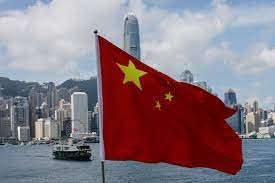$SMIC $TSM $NVDA
#Malaysia #China #Investment #Semiconductor #TechIndustry #RafiziRamli #TradeWar #TrumpTariffs #GlobalEconomy #FDI #EmergingMarkets #SupplyChain
Malaysia’s Economy Minister, Rafizi Ramli, has projected an influx of Chinese investment into the country, particularly within the semiconductor and technology sectors. The move comes as companies in these industries seek strategic alternatives to mitigate potential exposure to tariffs that could be imposed by the United States under the policies of former President Donald Trump or similar protectionist measures in the future. For many tech firms operating in Asia, the escalating geopolitical tensions between China and the West have made diversification of production bases a compelling necessity. Malaysia’s strategic location, stable political environment, and established infrastructure make it an attractive destination for businesses seeking to de-risk their supply chains.
The semiconductor industry, a cornerstone of many modern technologies, has been at the heart of U.S.-China trade disputes in recent years. Chinese companies, such as $SMIC, which face restrictions on accessing U.S.-origin semiconductor technology, are likely to explore markets like Malaysia to establish new production or research facilities. Similarly, Taiwan-based tech giants such as $TSM may look to deepen partnerships with Southeast Asian nations to sustain market shares amidst rising market pressures. For Malaysia, greater investment inflows could translate to job creation, infrastructure development, and bolstered GDP growth, potentially lifting the country’s stock market indices and improving confidence in its bond market as well.
Rafizi’s comments also reflect Malaysia’s broader economic strategy of positioning itself as a hub for foreign direct investment (FDI) in the global South. With China making up a significant share of global outbound FDI, Malaysia stands to benefit from being one of Beijing’s key partners within the ambitious Belt and Road Initiative. However, the country’s ability to seize this opportunity will depend significantly on policy consistency, incentives for investors, and how well it can address concerns around talent and labor availability in the highly specialized tech sector. Notably, competition from other ASEAN economies like Vietnam and Indonesia underscores the need for Malaysia to act swiftly while the window of opportunity is open.
The potential surge in tech and semiconductor investment could have broader market implications, notably strengthening Malaysia’s currency, the ringgit, as higher capital inflows boost reserves. This could also influence neighboring countries looking to attract similar investment opportunities, leading to an intensifying race for FDI within Southeast Asia. Investors globally should keep an eye on related developments, as firms like $NVDA, a U.S.-based semiconductor leader, may also be impacted indirectly depending on how global supply chain strategies evolve in response to these shifts. Malaysia’s move to attract and incorporate high-value Chinese investment could serve as a bellwether for how emerging markets adapt to the changing realities of a fragmented global economy.











Comments are closed.